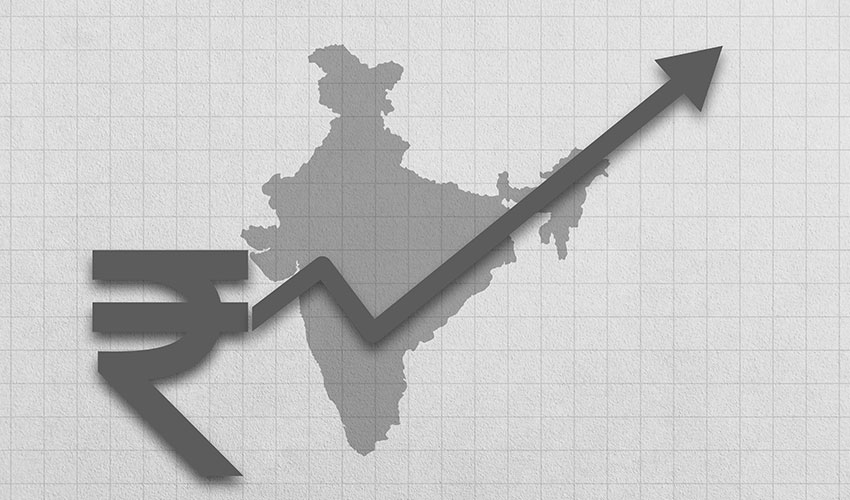Subscribe
Subscribe to EduBridge Blogs
What is Mean By GST?
Goods and Services Tax (GST) game-changing indirect tax system that has transformed the nation’s tax landscape. It is a value-added tax (VAT) levied on most goods and services sold for domestic consumption. The main aim of GST is to simplify the tax structure and foster a unified market. GST replaces multiple indirect taxes like excise duty, service tax, and VAT, eliminating the cascading effect of taxes.
GST helps in doing business with ease, encourages economic growth and ensures a fair and transparent tax regime for businesses and consumers across the country.

What Are The Benefits of GST – Goods and Service Tax
The implementation of GST in India has been instrumental in creating a more transparent, efficient and business-friendly tax environment which helps in contributing to economic growth and development.
Apart from this let’s look at some of the benefits of GST in India:
Easy compliance
One of the benefits of GST is easy compliance. With the implementation of GST, businesses now have to deal with a simplified and unified tax structure.
Thus, eliminating the complexity of managing multiple taxes and reducing the compliance burden on businesses. Under GST, businesses need to file just a single GST return. Additionally, GST is now technology-driven- it has online portals for registration, return filing and payment, making compliance procedures more streamlined and efficient. This ease of compliance requirements helps in saving time and resources for businesses, providing ease of doing business.
Uniformity of tax rates and structures
Another key benefit of GST in India is the uniformity of tax rates and structures. Before GST, different states had different tax rates and structures for goods and services in India, resulting in compliance challenges for businesses.
With the introduction of a new tax regime – GST a standardized tax rate and structure are implemented in India. This means that the same tax rate will apply to a product or service regardless of the state in which it is consumed or supplied. The uniformity helps to simplify tax calculations, eliminates disparities, promotes transparency and reduces tax evasion. It also ensures that businesses and consumers are well aware of the applicable tax rates, making it easier to comply with tax regulations.
Removal of cascading
One significant benefit of GST is the removal of cascading effects, commonly known as tax-on-tax. Before GST, various indirect taxes were levied at different stages of production and distribution, leading to inflated prices due to multiple taxes being charged on already-taxed components. With GST, taxes are imposed only on the value added at each stage, and businesses can claim input tax credits to offset tax liabilities. This eliminates the cascading effect, reducing the tax burden on businesses, lowering prices, and promoting economic efficiency. GST’s removal of cascading effects simplifies the tax structure, enhances competitiveness, and provides relief to consumers by preventing double taxation.
Improved competitiveness
GST improves the competitiveness it brings to the business by eliminating the cascading effect of taxes, reducing tax complexities and providing input tax credits. These factors collectively contribute to cost reduction and improved pricing for goods and services. Hence, businesses can pass on the benefits of lower taxes to consumers, making their products more competitive in the market.
Moreover, GST provides a seamless inter-state trade environment by unifying tax rates and procedures in India. It facilitates the movement of goods/services, reduces logistical barriers and enhances business efficiency by enabling businesses to expand their reach and compete on a national scale.
Gain to manufacturers and exporters
GST brings significant benefits to manufacturers and exporters. Firstly, GST eliminates the cascading effect of taxes and allows manufacturers to claim input tax credits on their purchases thus, reducing the overall tax burden. This leads to increase cost efficiency and competitiveness. Secondly, GST simplifies the export process by providing various export-related benefits and exemptions.
Exporters can enjoy zero-rated supplies, allowing them to claim refunds on the GST paid on inputs used for exports. This boosts the competitiveness of Indian goods and services in the global market. In short, GST provides a favourable environment for manufacturers and exporters, enhancing their profitability and encouraging international trade.
Simple and easy to administer
GST replaces multiple indirect taxes with a single tax, simplifying the tax structure and reducing compliance complexities. It streamlines tax calculations, reporting and filing processes easy for businesses to understand and comply with tax regulations. Additionally, GST provides online portals and technology-driven tools for registration, return filing and payment, further enhancing the ease of administration. The simplified and streamlined nature of GST reduces the administrative burden, saves time and resources and promotes a more efficient and hassle-free administration experience for businesses and tax authorities alike.
Better controls on leakage
GST controls leakage, referring to the prevention of tax evasion and leakages in the tax system. GST introduces a robust system of documentation and reporting with businesses required to maintain detailed records of transactions. This enhances transparency and accountability, making it harder or businesses to evade taxes. Additionally, the implementation of GST enables better tracking of input tax credits and ensures that taxes are paid at each stage of the supply chain. The streamlined and standardized tax structure under GST minimizes loopholes and strengthens the controls, reducing tax leakages and improving overall tax compliance.
Higher revenue efficiency
One another benefit of GST is higher revenue efficiency. GST streamlines the tax system, eliminating the cascading effect and reducing tax evasion. This leads to a broader tax base and increase tax compliance, resulting in higher tax revenue for the government. The implementation of GST has resulted in transparency and better tracking of transitions, minimizing revenue leakage. This simplified and inform tax structure facilitates efficient tax collection and administration. Hence the increased revenue efficiency under GST enables the government to allocate resources more effectively, invest in infrastructure, and welfare programs and spur economic growth, ultimately benefiting the overall development of the nation.
Single and transparent tax proportionate to the value of goods and services
GST is the implementation of a single and transparent tax system that is proportionate to the value of goods and services.GST replaces multiple indirect taxes with a unified tax on goods/services ensuring consistency and fairness in the taxation process. The tax is imposed on the value added at each stage of the supply chain, making it proportionate to the actual worth of goods/ services involved. Transparency helps in a clear understanding of tax liability for businesses and consumers. The single and transparent nature of GST enhances tax compliance, reduces disputes and fosters an efficient and equitable tax system.
Relief in the overall tax burden
GST is the relief it provides in the overall tax burden. GST eliminates the cascading effect of taxes, allowing businesses to claim input tax credits and reduce their tax liabilities. This reduction in tax burden enables businesses to lower their prices and make their products and services more affordable for consumers. GST also brings transparency and efficiency to the tax system, reducing tax evasion and ensuring a fairer distribution of the tax burden. The overall tax relief provided by GST helps in economic growth, stimulates investment and improves the purchasing power of individuals and businesses leading to a positive impact on the overall economy.

What Are The Benefits of GST to a Common Man?
With the implementation of GST has its fair share of challenges, but it has brought significant benefits for the common man. Simplification of taxes has reduced tax burden, streamlined logistics, increased availability of tax credits, e-commerce facilitation, a border tax base and digitalized economy are some of the positive outcomes of GST that directly or indirectly impact the lives of individuals.
Now, let’s look at some of the benefits of GST benefits in India for the common man:
- Tax structure is simplified
GST replaces multiple indirect taxes like excise duty, VAT, service tax, etc. with a single tax structure. The simplification eliminates the complexities of navigating through various tax laws, making it easier for individuals to understand and comply with tax obligations.
- Overall tax burden is reduced
GST provides a transparent tax system. It also helps in eliminating the cascading effect of taxes by allowing input tax burden on the end consumer. GST has helped in unifying prices of goods and services more affordable for the common man.
- Elimination of multiple checkpoints
Before GST, goods were subject to various checkpoints at the state level, resulting in delays and increased transportation costs. The introduction of GST, the implementation of the e-way bill system and the removal of entry tax barriers have streamlined the movement of goods across state borders. This helps in faster delivery of goods, cost savings and ultimately benefits the common man.
- Increased availability of tax credits
Under GST, businesses can claim input tax credits on goods and services purchased for the furtherance of their business. This enables them to reduce their overall tax liability. As a result, businesses can pass on the benefits to consumers by offering goods and services at more competitive prices.
- E-commerce falicitation:
GST has also brought e-commerce transactions to the purview. Thus, making sure that all online sellers whether large corporations or small-scale traders, comply with tax regulations. A common man can purchase products online with confidence knowing that sellers adhere to tax laws. Additionally, e-commerce deducts taxes at the time of payment further simplifying the process for consumers.
- Increase revenue for the government and wider tax base:
GST has widened the tax base bringing more businesses into the formal economy. Increased tax compliance helps to generate additional revenue for the government, that can be utilized for public welfare initiatives. The common man benefits indirectly through improved infrastructure, healthcare, education and other government services.
- Encouraging digitalization for the economy:
GST has prompted businesses to adopt digital practices for compliance like e-invoicing, online tax payments and filing returns. It helps the common man with a more streamlined and hassle-free interaction with businesses and government agencies.

Benefit of GST on the Economy of India(Explain in listicle format)
The implementation of GST has several positive impacts on the economic landscape.GST has brought significant benefits to the Indian economy i.e. from streamlining the tax structure and boosting GDP growth to promoting ease of doing business and eliminating tax cascading, GST has played a pivotal role in transforming the economic landscape of the country. Additionally, the formalization of the informal sector has contributed to a more inclusive and robust economy. Overall, GST has laid the foundation for a more transparent, efficient, and competitive business environment in India. Let’s look at the benefits of GST in India on the economic front.
- Tax structure:
Since GST replaced multiple indirect taxes like excise duty, service tax, VAT, etc. with a single tax structure, it has significantly helped to reduce complexities arising in the tax system, making it easier for businesses to comply with tax regulations. It has also helped to eliminate cascading effects and bring in more transparency, increase tax compliance and improve the revenue collection for the government.
- Boost to GDP growth:
GST implementation has led to the integration of the Indian market by removing inter-state barriers. This integration has led to the free movement of goods/ services across state borders, eliminating inefficiencies and reducing logistics costs. As a result, businesses have experienced improved supply chains and increased market access, contributing to higher GDP growth for India.
- Promote ease of doing business:
Since GST has eliminated multiple tax registrations with a single unified registration the process of starting and operating businesses in India is now simplified, making it easier for entrepreneurs to navigate the tax system. This simplification encourages more individuals to venture into business, leading to an increase in entrepreneurship and job creation.
- Elimination of cascading:
One of the significant advantages of GST is the elimination of tax cascading.
GST allows businesses to claim input tax credits for the tax paid on purchases, which can be offset against their tax liability. Hence, this reduces the overall tax burden on businesses, improves cash flow and makes Indian goods/ services more competitive both domestically and internationally.
- Formalizing the informal sector:
GST has played a crucial benefit of GST in India is formalizing the informal sector of the Indian economy. With the introduction of GST, businesses are incentivized to register and comply with tax regulations. This formalization leads to increased transparency, better access to credit and the inclusion of informal sector workers under social security schemes. It also expands the tax base, ensuring a fairer distribution of the tax burden.
Benefits of GST on Industry and Trade (Explain in listicle format)
GST has had a transformative effect on the industry and trade sectors in India. By replacing multiple indirect taxes with a unified tax system, GST has brought several benefits to businesses. GST has created a more conducive environment for industry and trade, fostering economic progress and enhancing the ease of doing business in India.
Here’s some of the benefits of GST in India for Industry and Trade:
- Compliance simplified:
GST has simplified the tax compliance process for businesses. It replaces the need to comply with multiple tax laws with a single tax structure. This simplification helps to reduce the compliance burden and enables businesses to focus more on their core operations of business.
- Input tax credit:
Under the GST regime, businesses can claim the input tax credit on the tax paid for goods and services used in their business operations. This mechanism allows businesses to offset their tax liability by claiming credits for the taxes already paid. Thus it promotes transparency, reduces the tax burden on businesses and enhances cash flow.
- Cascading tax effect removal:
GST eliminates the tax-on-tax which is known as the cascading effect of taxes. With GST, businesses can claim input tax credits, ensuring that taxes are only levied on the value added at each stage. This reduction in cascading taxes leads to cost savings for businesses.
- Improved logistics and supply chain:
GST has harmonized the movement of goods across state borders by eliminating multiple checkpoints and entry tax barriers. This has resulted in improved logistics and supply chain efficiency. Businesses can now transport goods seamlessly throughout the country, reducing transit time and lowering transportation costs. The streamlined logistics benefit industries involved in manufacturing, distribution and retail.
- Increased competitiveness:
GST has made businesses in India more competitive, domestically and as well as internationally. With the elimination of cascading taxes and the availability of input tax credits, the cost of production has decreased. This allows businesses to offer their products and services at more competitive prices, thereby gaining an edge in the market. Additionally to this, the simplified tax structure attracts foreign investment, further enhancing competitiveness.
- Reduction in unorganized sector:
With the implementation of GST, businesses are incentivized to register and comply with tax regulations. This formalization brings businesses into the mainstream economy, thus providing them access to better credit facilities, improved technology and a level playing field. GST promotes in the overall development of the industry and trade sectors.
Conclusion:
Hope this blog gave you fair insights on the benefits of GST in India on multiple levels. To learn more about GST, sign up for our course at EduBridge.
Recent Blogs
Related Blogs
Accelerate Your Career with Expert Guidance and Guaranteed Job*!
"*" indicates required fields





